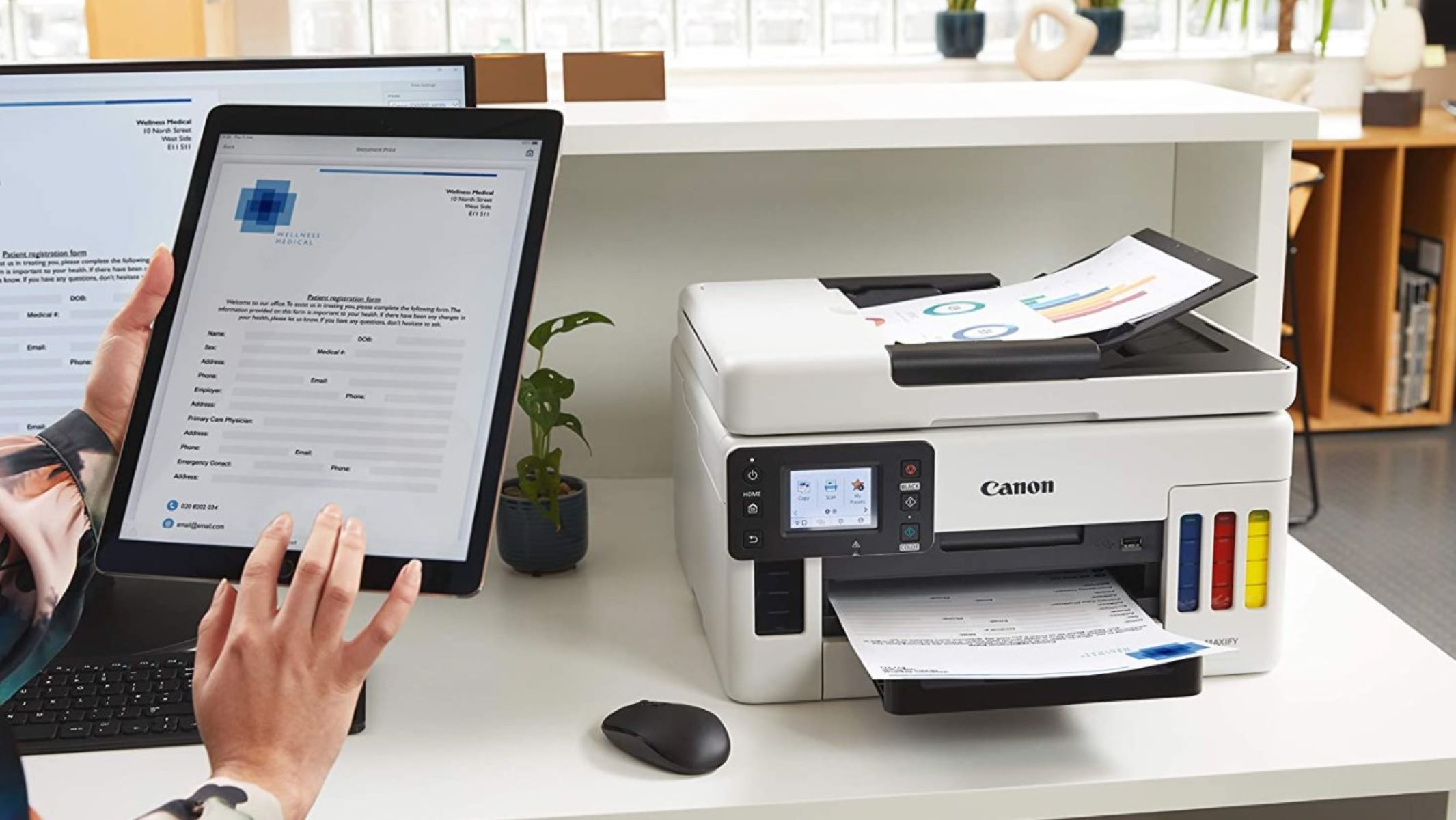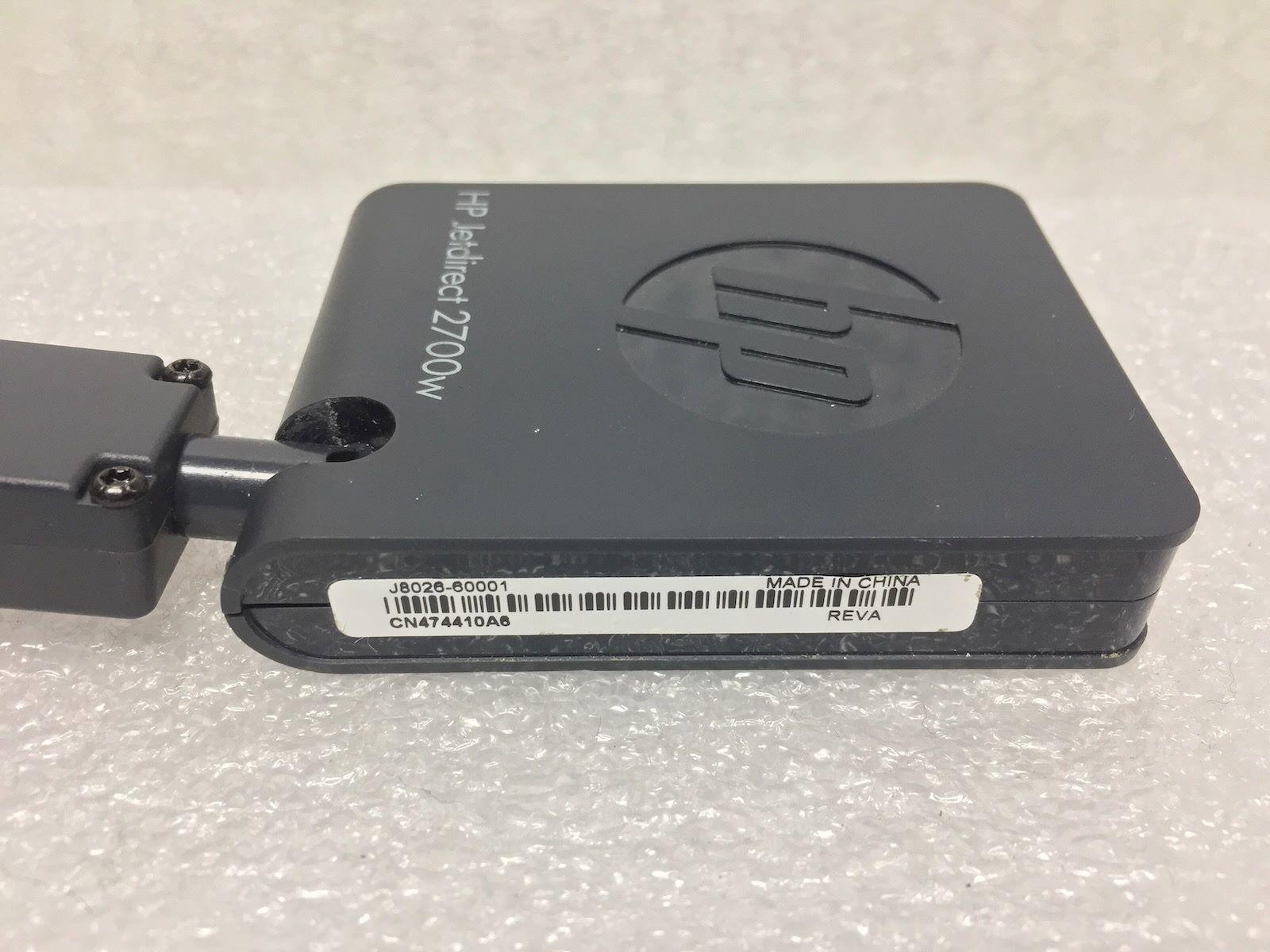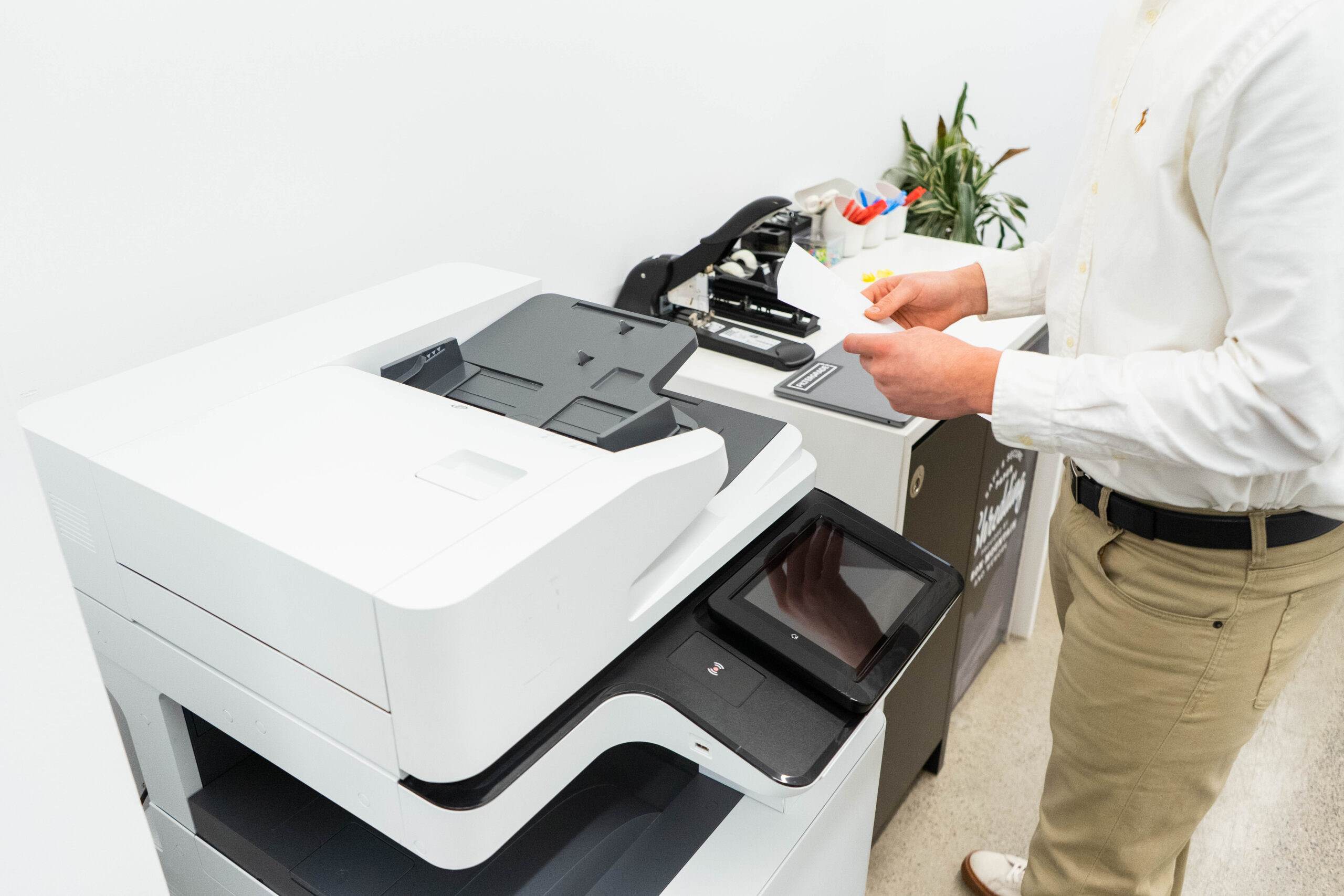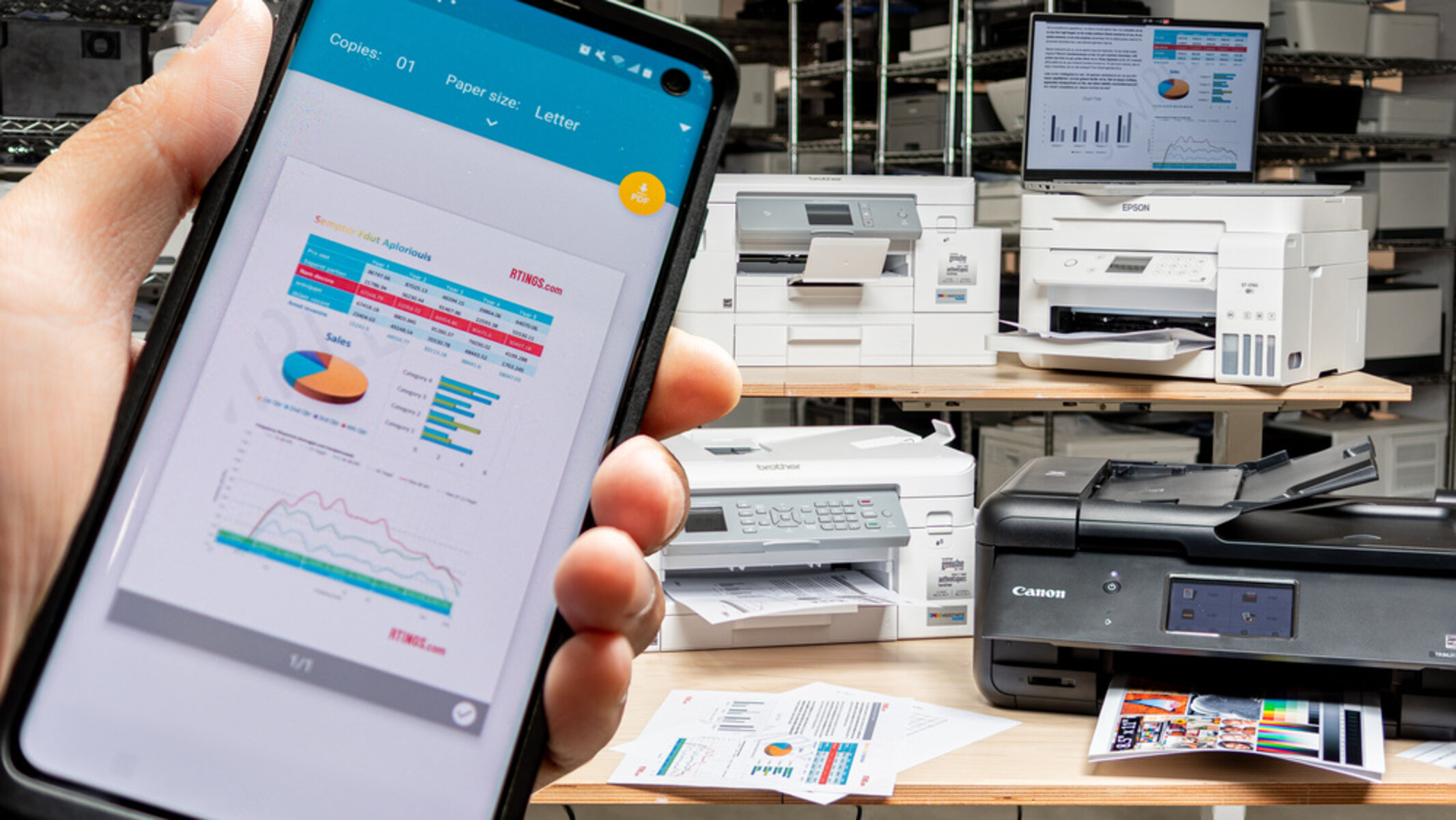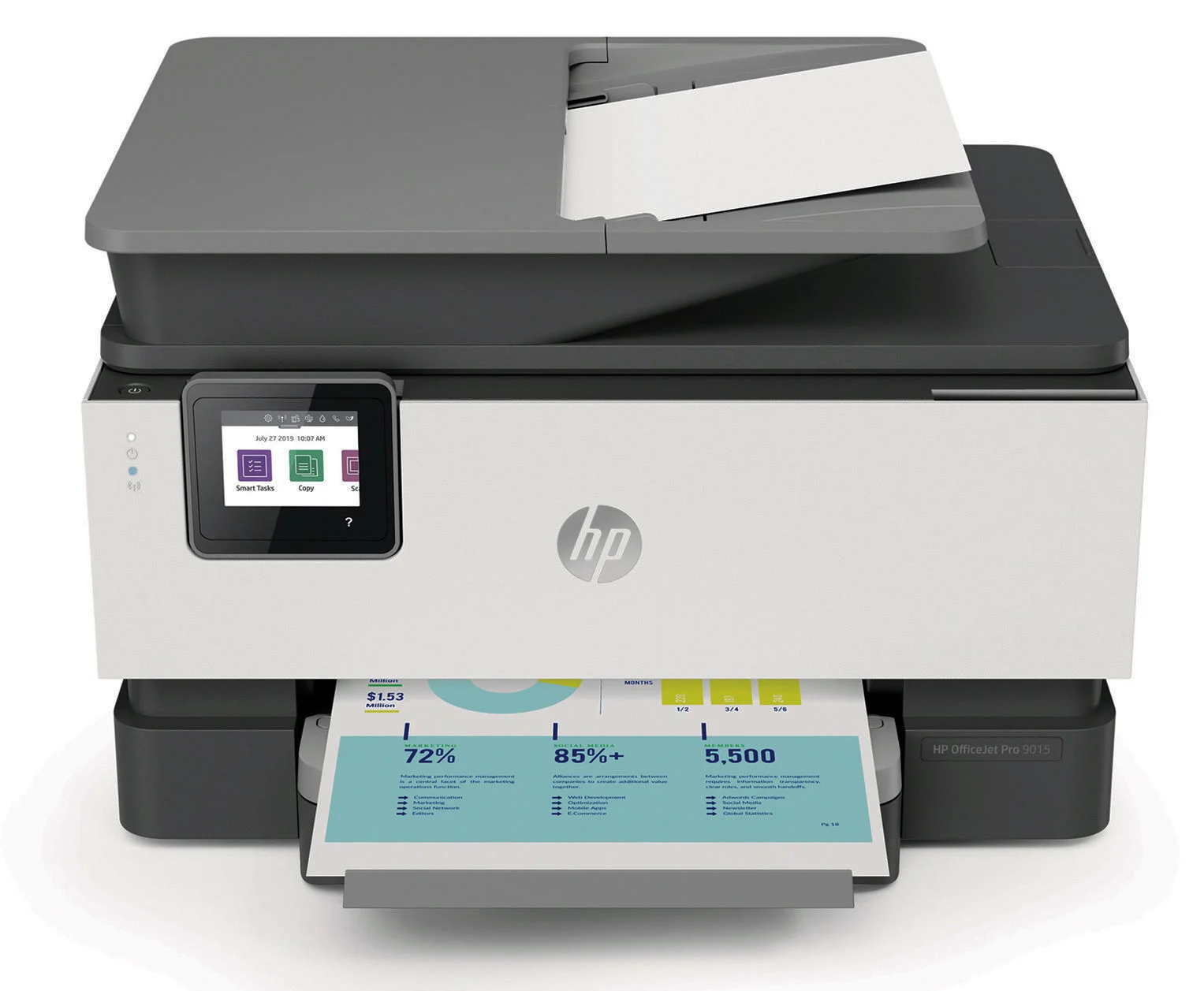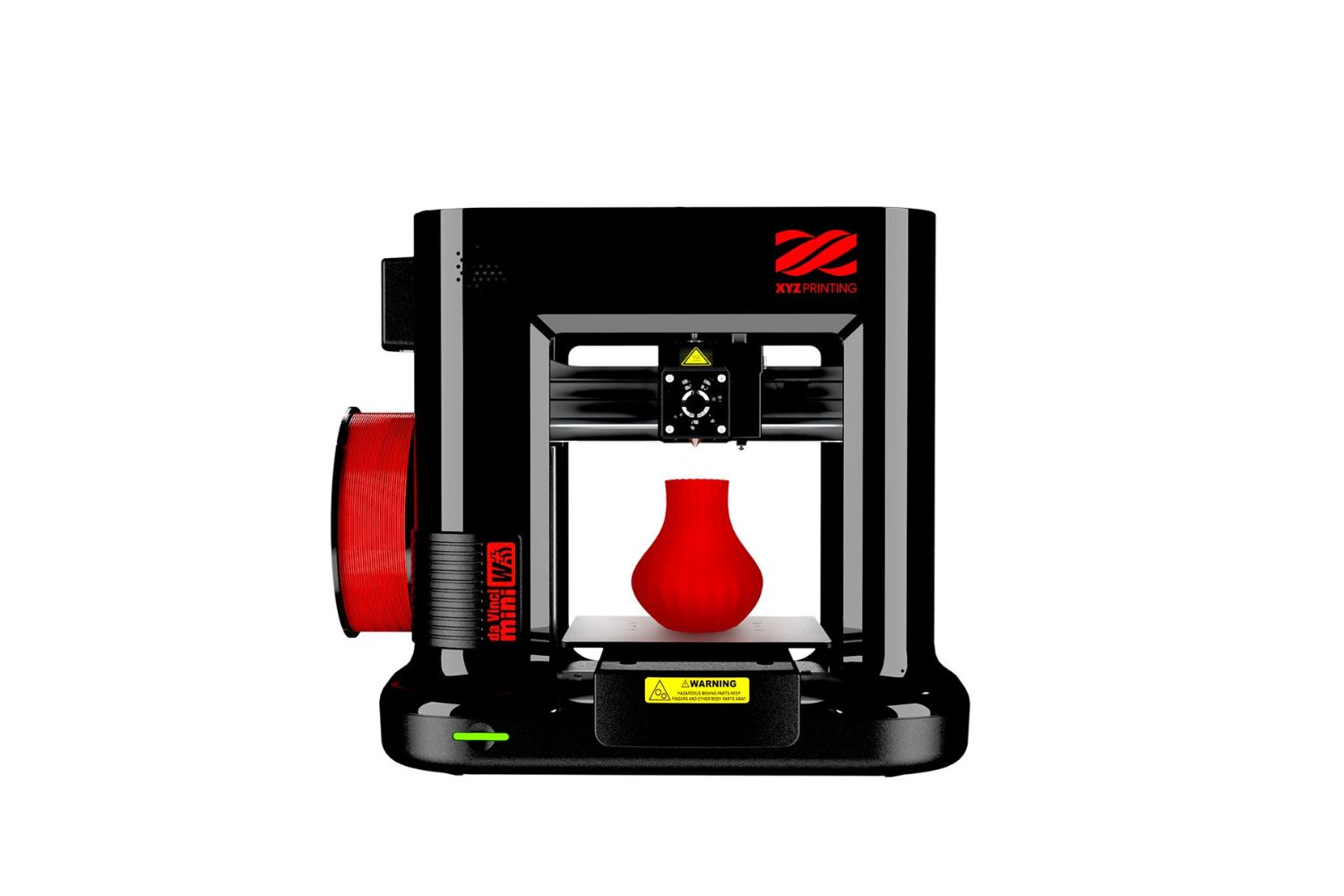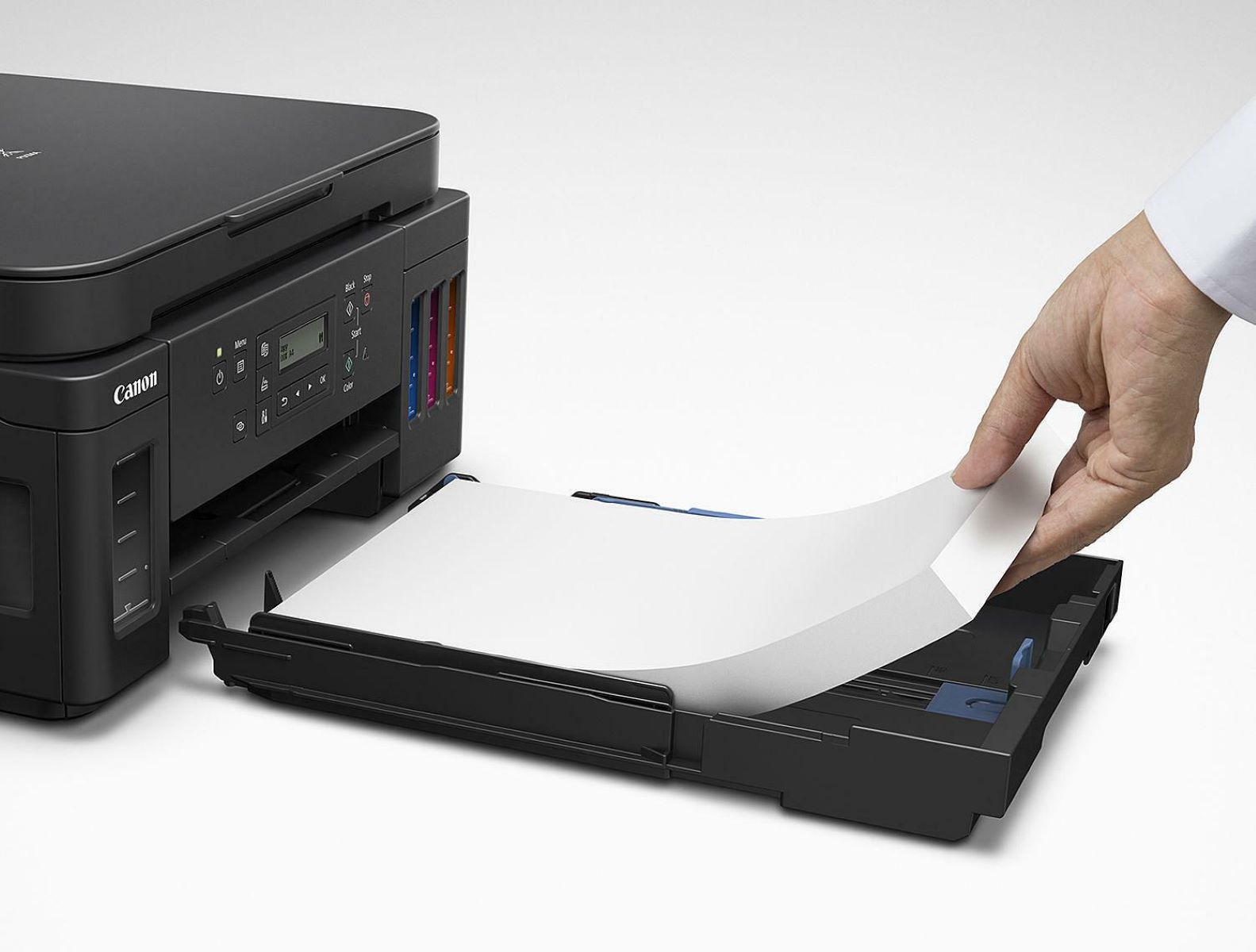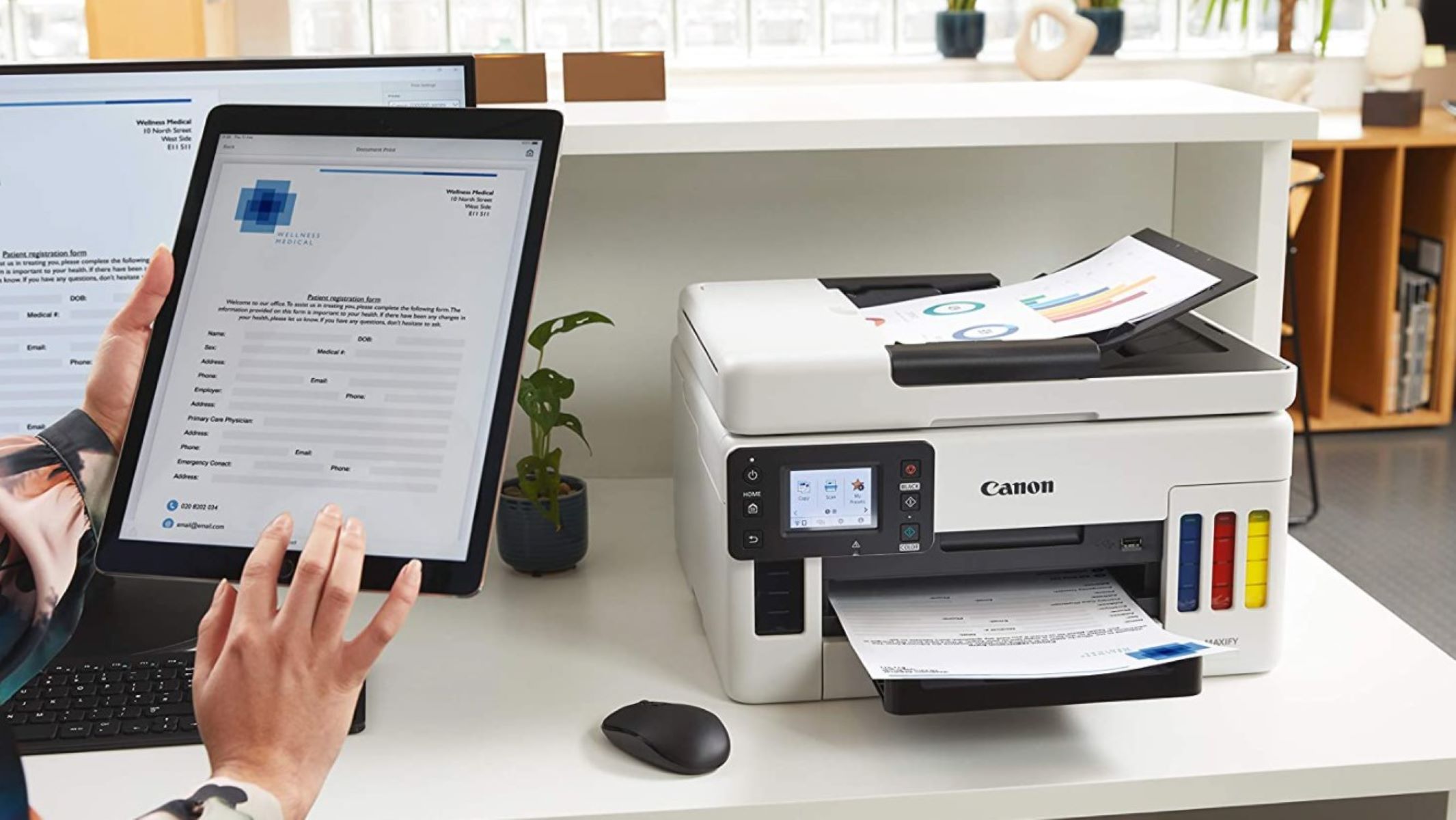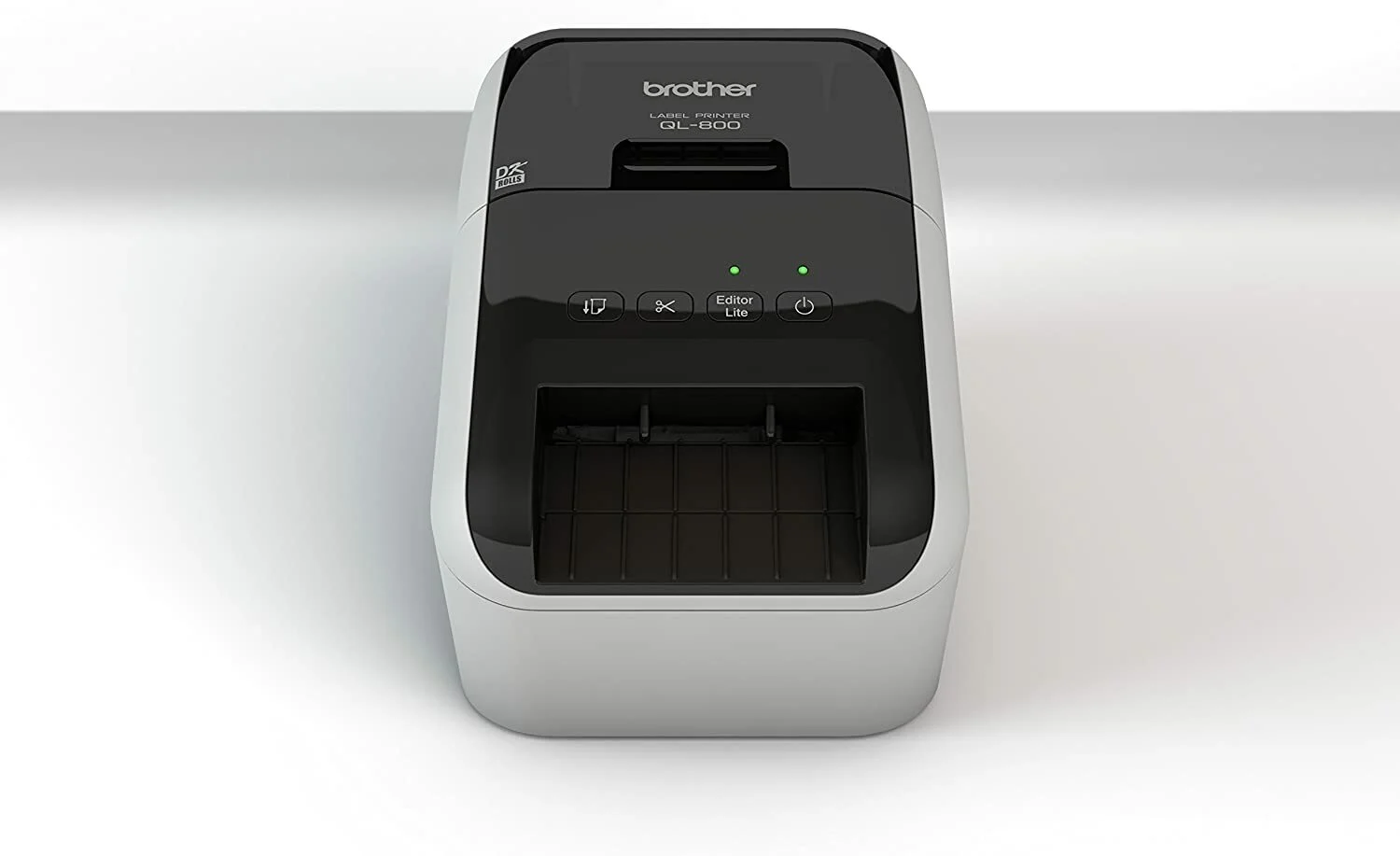Introduction
With the rapid advancement of technology, the way we print documents has also evolved. Gone are the days of messy cables and limited connectivity options. Thanks to the innovation of wireless printers, printing has become more convenient and hassle-free.
A wireless printer, as the name suggests, is a printer that can connect to a computer or other devices without the need for physical cables. It utilizes wireless technology such as Wi-Fi or Bluetooth to establish a connection, allowing users to print from anywhere within the network range.
In this article, we will explore how wireless printers work and the benefits they offer. We will delve into the process of connecting a wireless printer to a computer, how they communicate with other devices, and the advantages they provide over traditional wired printers.
So, if you’re curious about the magic behind wireless printing and why it is becoming increasingly popular, read on to discover the inner workings of these modern marvels.
What is a wireless printer?
A wireless printer is a type of printer that can connect to a computer or other devices without the need for physical cables. Unlike traditional printers that rely on USB or Ethernet connections, wireless printers use wireless technologies such as Wi-Fi or Bluetooth to establish a connection.
Wireless printers come in various forms, including inkjet and laser printers, and offer the same printing capabilities as their wired counterparts. The key difference lies in the flexibility and convenience that wireless connectivity provides.
By eliminating the need for cables, wireless printers offer greater freedom and mobility. Users can place the printer in a convenient location without worrying about cable lengths or having to rearrange the workspace. This is particularly useful in home offices or shared work environments where multiple devices need to connect to the printer.
Additionally, wireless printers often feature built-in Wi-Fi capabilities, allowing multiple devices to connect simultaneously. This means that you can send print jobs from your laptop, smartphone, or tablet without the need for complex configurations or switching cables between devices.
Moreover, wireless printers can also support cloud printing services. By linking the printer to a cloud service provider such as Google Cloud Print or Apple AirPrint, users can print documents from anywhere using their smartphones or tablets. This feature further enhances the flexibility and convenience of wireless printing.
Overall, a wireless printer offers convenience, flexibility, and ease of use. It removes the limitations imposed by physical cables and allows for seamless printing from multiple devices. Whether you’re working from home, in a shared office, or on the go, a wireless printer is a valuable tool that simplifies the printing process.
How does a wireless printer connect to a computer?
Connecting a wireless printer to a computer involves a few simple steps that vary based on the printer’s make and model. In general, the process consists of the following:
1. Wi-Fi Setup: Most wireless printers come with a setup process that involves connecting the printer to a Wi-Fi network. This typically involves accessing the printer’s settings menu and selecting the Wi-Fi network you want to connect to. Some printers have a built-in display for easy navigation, while others require you to connect a computer to the printer and run a setup software.
2. Software Installation: Once the wireless printer is connected to the Wi-Fi network, you will need to install the printer software on your computer. This software includes the necessary drivers and utilities to enable printing and manage printer settings. It can usually be downloaded from the printer manufacturer’s website or included in a CD provided with the printer.
3. Driver Installation: After the software is installed, you will need to install the printer driver on your computer. The driver allows your computer to communicate with the printer and send print jobs. Depending on your operating system, the driver installation may happen automatically or require manual installation from the software package.
4. Printer Discovery and Configuration: Once the driver is installed, your computer will search for the newly connected printer. In some cases, the printer may be automatically detected, while in others, you may need to manually add it using the printer’s IP address or a hostname. Once the printer is discovered, you can configure its settings, such as paper size, print quality, and default settings.
5. Print a Test Page: To ensure that the connection is successful, it is recommended to print a test page. This will help verify that the printer is functioning correctly and that the communication between the computer and the printer is established.
Each printer brand and model may have slight variations in the setup process, so it is important to consult the printer’s user manual or the manufacturer’s website for specific instructions.
Overall, connecting a wireless printer to a computer is a relatively straightforward process. Once the connection is established, you can print wirelessly from your computer without the need for physical cables, providing convenience and flexibility in your printing tasks.
How does a wireless printer connect to other devices?
Wireless printers not only allow you to print wirelessly from a computer but also offer the convenience of connecting to other devices such as smartphones, tablets, and even digital cameras. Here’s a breakdown of how a wireless printer can connect to these devices:
1. Mobile Devices: Connecting a wireless printer to a smartphone or tablet is made possible through the use of mobile printing applications or built-in printing capabilities. Many printer manufacturers provide dedicated mobile printing apps that allow you to send print jobs directly from your mobile device to the printer. In addition, most modern smartphones and tablets offer native printing support that enables you to connect and print wirelessly to compatible printers without the need for additional apps.
2. Digital Cameras: Some wireless printers support printing directly from digital cameras that have Wi-Fi capabilities. By connecting the camera and the printer to the same Wi-Fi network, you can send print commands directly from the camera to the printer. This is especially useful for printing photos immediately after capturing them, eliminating the need for a computer as an intermediary device.
3. Cloud Printing: Another way a wireless printer can connect to other devices is through cloud printing services. By linking the printer to a cloud printing service like Google Cloud Print or Apple AirPrint, you can print directly from devices connected to the same cloud account. This means you can print documents and photos from any device with internet access, whether it’s your smartphone, tablet, or computer, regardless of their physical proximity to the printer.
4. Network Printing: In addition to connecting to individual devices, wireless printers can also connect to other devices on the same local network. For example, if you have multiple computers or laptops connected to the same Wi-Fi network, you can easily print from any of these devices to the wireless printer without the need for individual setup on each device. This is ideal for shared work environments, where multiple users need access to the same printer.
While the specific steps for connecting these devices to a wireless printer may vary depending on the make and model, the overall concept remains the same. By leveraging wireless technologies like Wi-Fi and utilizing compatible software and applications, wireless printers offer seamless connectivity and printing capabilities across a wide range of devices.
How does a wireless printer receive print commands?
A wireless printer receives print commands through various methods, depending on the device or software being used. Here are some common ways that a wireless printer can receive print commands:
1. Wi-Fi Network: The most common method for sending print commands to a wireless printer is through a Wi-Fi network. Once the printer is connected to the Wi-Fi network, any device connected to the same network can send print jobs to the printer. This includes computers, laptops, smartphones, tablets, and even other devices like digital cameras or IoT devices that have printing capabilities.
2. Mobile Printing Apps: Many printer manufacturers offer dedicated mobile printing apps that allow users to send print commands directly from their smartphones or tablets to the wireless printer. These apps typically connect to the printer over Wi-Fi and provide a seamless interface for selecting print options and sending the print job. Some apps also support additional features like scanning or accessing cloud storage to print documents.
3. Printing Utilities: Most operating systems, such as Windows, macOS, and Linux, have built-in printing utilities that enable users to send print commands to a wireless printer. These utilities typically detect the wireless printer on the network and provide a user-friendly interface for selecting print options, such as page size, print quality, and number of copies. Users can initiate the print command from within their preferred application or from the device’s printing settings.
4. Cloud Printing Services: Another method for sending print commands to a wireless printer is through cloud printing services. By linking the printer to a cloud printing service like Google Cloud Print or Apple AirPrint, users can send print jobs from any device connected to the internet, regardless of their physical proximity to the printer. The print commands are sent to the cloud service, which then forwards them to the wireless printer for printing.
5. Email Printing: Some wireless printers offer the ability to receive print commands via email. Each printer is assigned a unique email address, and users can send documents or photos as email attachments to this address. The printer will then receive the email and automatically print the attached files. Email printing is especially useful for remotely sending print commands to a wireless printer.
These are just a few examples of how a wireless printer can receive print commands. The specific method and compatibility may vary depending on the printer model, the device or software used to send the print command, and the supported features of the wireless printer.
How does a wireless printer send data to the computer?
When printing wirelessly, a wireless printer sends data to the computer through the established wireless connection. Here’s a breakdown of how this process works:
1. Print Job Initialization: The computer sends a print job to the wireless printer, specifying the document or file to be printed and any desired print settings, such as paper size, print quality, or color options. This print job is typically initiated from within an application or through the device’s printing settings.
2. Data Conversion: The printer driver on the computer converts the electronic data from the print job into a format that the printer can understand. This may involve converting the data into a language that the printer’s firmware recognizes, such as PCL (Printer Command Language) or PostScript.
3. Wireless Transmission: Once the data is converted, the computer transmits the print data wirelessly to the printer. The specific wireless transmission method may vary depending on the printer’s capabilities and the wireless technology being used. For example, if the printer supports Wi-Fi, the data is sent over the Wi-Fi network. If the printer uses Bluetooth, the data is transmitted via the Bluetooth connection.
4. Print Processing: Upon receiving the print data, the wireless printer processes the data according to the print settings specified in the print job. This includes tasks such as determining the layout on the paper, applying print settings like color or grayscale, and managing printer-specific features like double-sided printing or stapling.
5. Print Output: Once the print data has been processed, the wireless printer begins printing the document or file. This involves creating the desired output on the paper, whether it’s text, images, or a combination of both, based on the instructions received from the computer.
6. Print Job Completion: After the printing is complete, the wireless printer may send a notification or status update to the computer, indicating the successful completion of the print job. This notification may be displayed on the computer screen or sent as a system notification, depending on the operating system and printer configuration.
Throughout this process, the wireless connection between the computer and the printer remains active, allowing for continuous communication and the ability to send subsequent print jobs as needed.
Overall, the wireless transmission of print data from the computer to a wireless printer enables convenient and efficient printing without the need for physical cables, providing flexibility and freedom in a wireless printing environment.
How does a wireless printer communicate with a router?
A wireless printer communicates with a router using wireless technologies such as Wi-Fi or, in some cases, Bluetooth. This wireless connection allows the printer to establish a network connection and communicate with other devices on the network. Here’s how a wireless printer and router communicate with each other:
1. Wi-Fi Connection: The first step in establishing communication between a wireless printer and a router is connecting the printer to the Wi-Fi network. Most wireless printers have built-in Wi-Fi capabilities that allow them to connect to available Wi-Fi networks. The printer scans for nearby Wi-Fi signals and displays a list of available networks. The user then selects the desired network and enters the network password, if required, to establish a connection.
2. IP Address Assignment: Once connected to the Wi-Fi network, the router assigns an IP address to the wireless printer. This IP address serves as a unique identifier for the printer on the network, allowing other devices to locate and communicate with it. The IP address can be assigned automatically through DHCP (Dynamic Host Configuration Protocol) or manually configured on the printer or through the router’s settings.
3. Network Discovery: The wireless printer broadcasts its presence on the network using protocols such as Bonjour (for Apple devices) or UPnP (Universal Plug and Play). This allows other devices on the same network to discover the printer and establish communication with it. The printer’s network name, also known as SSID (Service Set Identifier), may be displayed in the list of available printers or devices on connected devices.
4. Print Command Reception: When a print command is sent from a device on the same network, such as a computer or smartphone, the wireless printer receives the print command and processes it accordingly. The printer uses the established network connection to communicate with the requesting device and initiate the printing process.
5. Printer Status Communication: The wireless printer may also communicate with the router to provide status updates and receive commands. For example, the printer can send notifications to the router when it is ready to receive new print jobs or inform the router when it requires maintenance or supplies replenishment. This enables the router to manage and monitor the printer’s status and availability remotely.
By utilizing wireless technologies and establishing a connection with a router, a wireless printer is able to seamlessly integrate into a network environment and communicate with other devices. This allows for convenient printing from multiple devices while providing the flexibility and freedom of a wireless printing experience.
What are the advantages of using a wireless printer?
Using a wireless printer offers numerous advantages that make it a popular choice for both home and office environments. Here are some of the key advantages of using a wireless printer:
1. Convenience and Flexibility: One of the most significant advantages of a wireless printer is the convenience and flexibility it provides. With a wireless connection, you can place the printer anywhere within the range of the Wi-Fi network, eliminating the need for physical cables. This allows for greater flexibility in organizing your workspace and avoids the hassle of dealing with tangled cables.
2. Multiple Device Connectivity: Wireless printers support multiple device connectivity. This means that various computers, laptops, smartphones, and tablets can connect to the same printer without the need for individual setup or additional cables. This makes it easier for everyone in the household or office to print from their preferred device, enhancing productivity and convenience.
3. Mobile Printing: Wireless printers often come with mobile printing capabilities or support mobile printing apps. This enables users to print directly from their smartphones or tablets, even if they are not connected to a computer. Mobile printing is particularly useful for printing documents or photos on the go, allowing for seamless and convenient printing from mobile devices.
4. Cloud Printing: Many wireless printers support cloud printing services such as Google Cloud Print or Apple AirPrint. This means you can print directly from cloud storage services or send print commands remotely via the internet. It eliminates the need to transfer files to a connected device before printing and provides the ability to print from anywhere with an internet connection.
5. Shared Printing: Wireless printers are ideal for shared environments where multiple users need access to the same printer. With a wireless connection, anyone within the network range can send print jobs to the printer. This makes it easy to collaborate and share resources, enhancing productivity in a shared workspace or home environment.
6. Simplified Setup: Setting up a wireless printer is generally easier than setting up a wired printer. It eliminates the need for complex cable connections and reduces the setup process to connecting the printer to the Wi-Fi network. This simplicity makes wireless printers a preferable option for users who are not tech-savvy or have limited technical knowledge.
7. Improved Aesthetics: Wireless printers help declutter your workspace by removing the need for visible cables. This not only improves the aesthetics of your office or home environment but also reduces the risk of tripping over cables or accidentally unplugging the printer.
Overall, the advantages of using a wireless printer include convenience, flexibility, mobile and cloud printing capabilities, simplified setup process, and improved aesthetics. These benefits contribute to a seamless and efficient printing experience, making wireless printers a popular choice for both personal and professional use.
Conclusion
Wireless printers have revolutionized the way we print documents, offering convenience, flexibility, and a seamless printing experience. Through the use of wireless technologies such as Wi-Fi and Bluetooth, these printers eliminate the need for physical cables and enable users to print from various devices within the network range.
By connecting to a Wi-Fi network, a wireless printer can receive print commands from computers, smartphones, tablets, and even digital cameras. With the ability to print wirelessly, users can enjoy the freedom of printing from anywhere within the network, without the limitations imposed by physical connections.
Wireless printers also offer the convenience of mobile printing, allowing users to print directly from their smartphones or tablets using dedicated mobile printing apps or built-in printing capabilities. Moreover, the integration of cloud printing services enables remote printing and eliminates the need to transfer files to a connected device before printing.
In shared environments, wireless printers facilitate collaboration by providing multiple device connectivity. This allows for easy sharing of the printer among multiple users, making it accessible to everyone within the network without the hassle of individual setup or additional cables.
Setting up a wireless printer is generally simple and user-friendly, eliminating the complexity of cable connections. This makes them an ideal choice for users who prefer a hassle-free setup process or have limited technical knowledge.
Overall, the advantages of using a wireless printer extend beyond mere convenience and flexibility. They significantly enhance productivity, enable on-the-go printing, simplify printing in shared environments, and contribute to a cleaner and more organized workspace.
As wireless technology continues to advance, we can expect further improvements in wireless printing capabilities, making it an even more seamless and efficient process. Whether at home or in the office, wireless printers have undoubtedly transformed the way we print, offering a convenient and versatile solution for all our printing needs.







